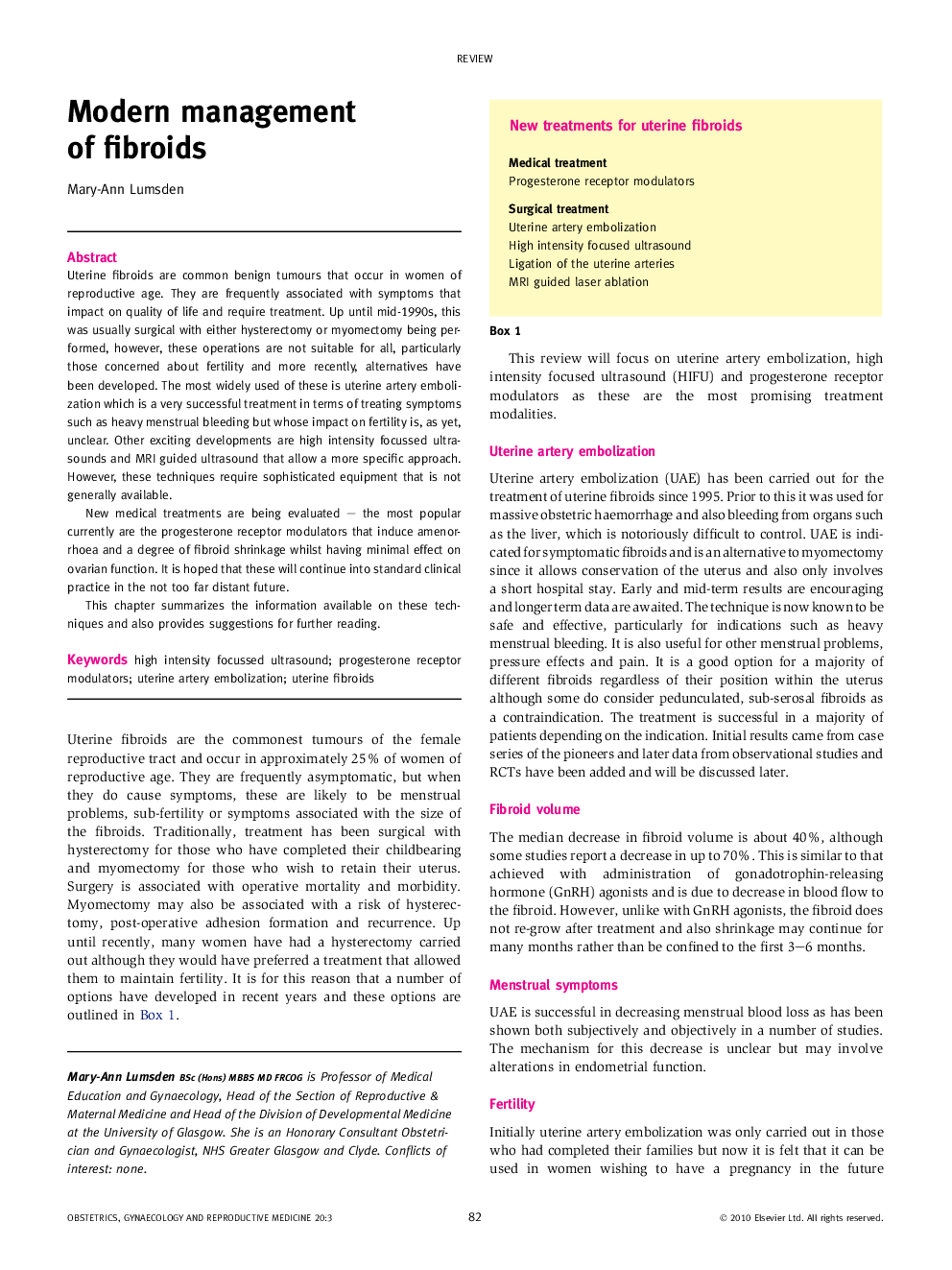| Article ID | Journal | Published Year | Pages | File Type |
|---|---|---|---|---|
| 3967137 | Obstetrics, Gynaecology & Reproductive Medicine | 2010 | 5 Pages |
Uterine fibroids are common benign tumours that occur in women of reproductive age. They are frequently associated with symptoms that impact on quality of life and require treatment. Up until mid-1990s, this was usually surgical with either hysterectomy or myomectomy being performed, however, these operations are not suitable for all, particularly those concerned about fertility and more recently, alternatives have been developed. The most widely used of these is uterine artery embolization which is a very successful treatment in terms of treating symptoms such as heavy menstrual bleeding but whose impact on fertility is, as yet, unclear. Other exciting developments are high intensity focussed ultrasounds and MRI guided ultrasound that allow a more specific approach. However, these techniques require sophisticated equipment that is not generally available.New medical treatments are being evaluated – the most popular currently are the progesterone receptor modulators that induce amenorrhoea and a degree of fibroid shrinkage whilst having minimal effect on ovarian function. It is hoped that these will continue into standard clinical practice in the not too far distant future.This chapter summarizes the information available on these techniques and also provides suggestions for further reading.
